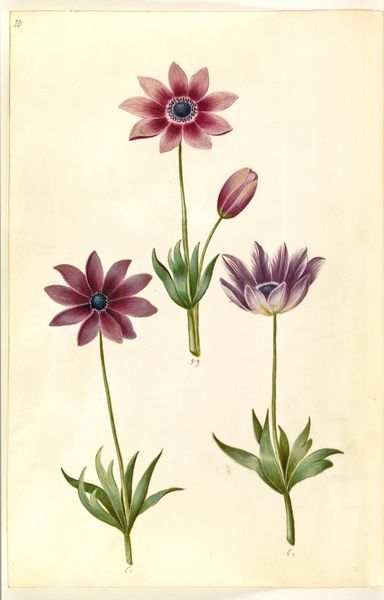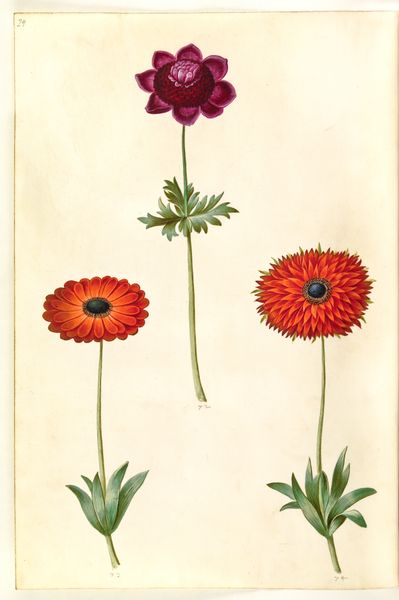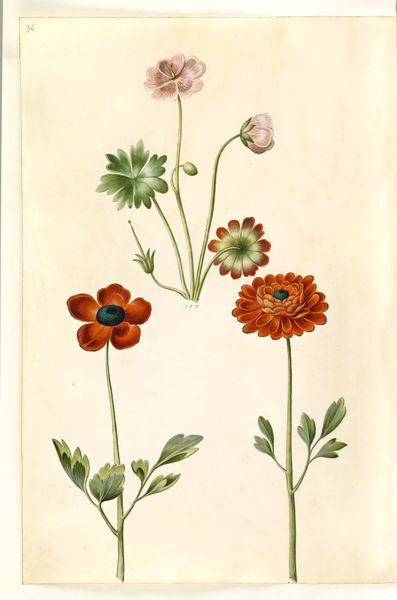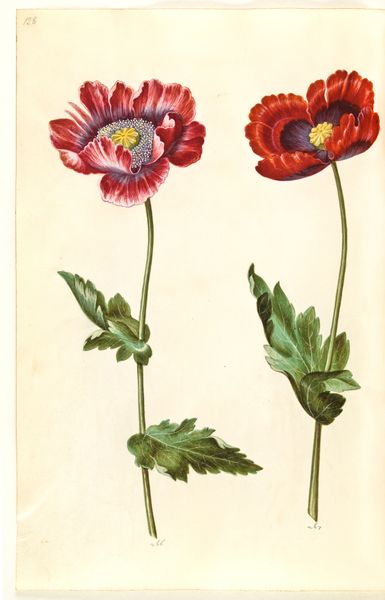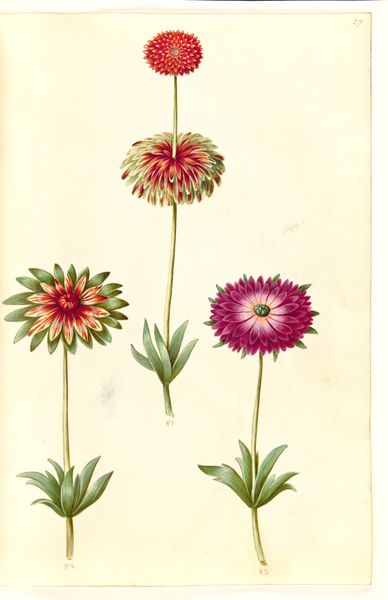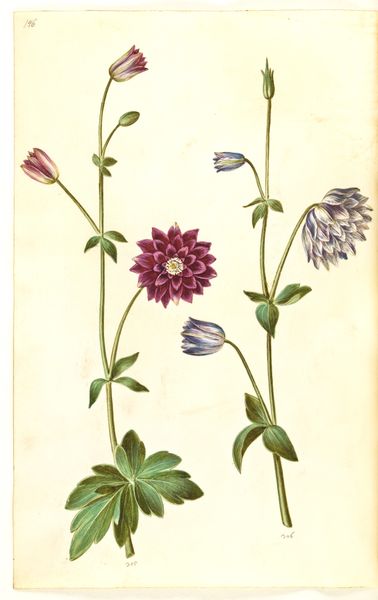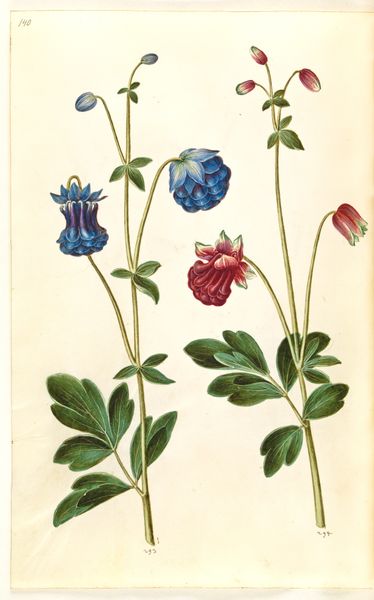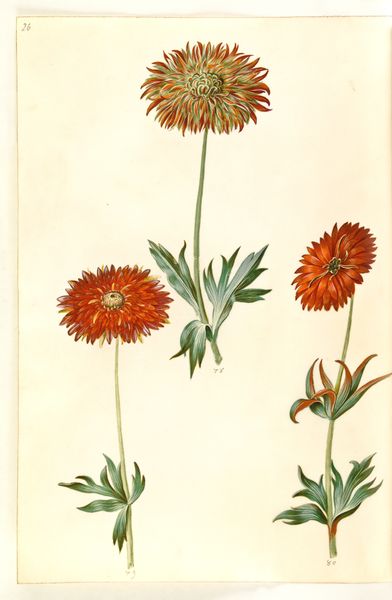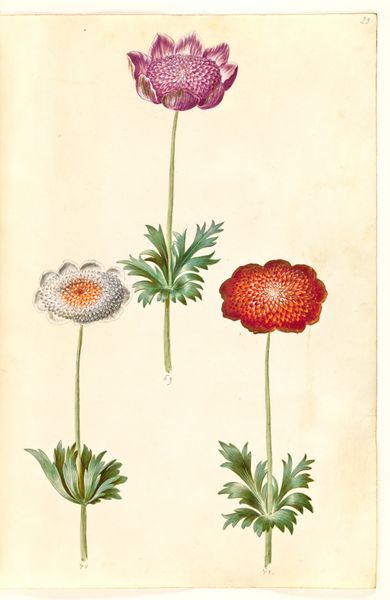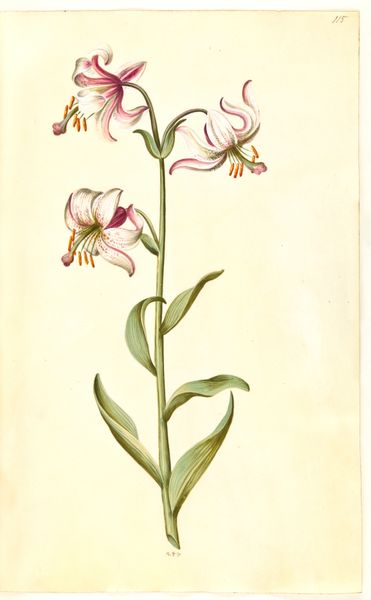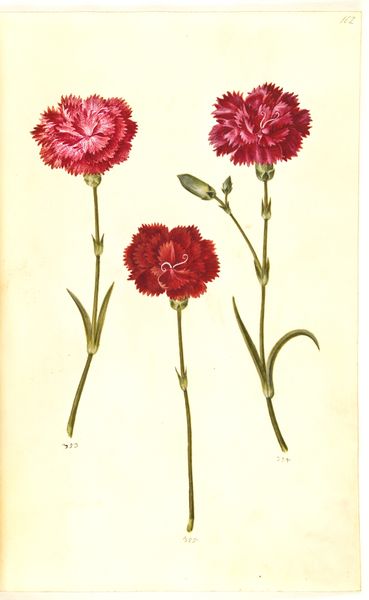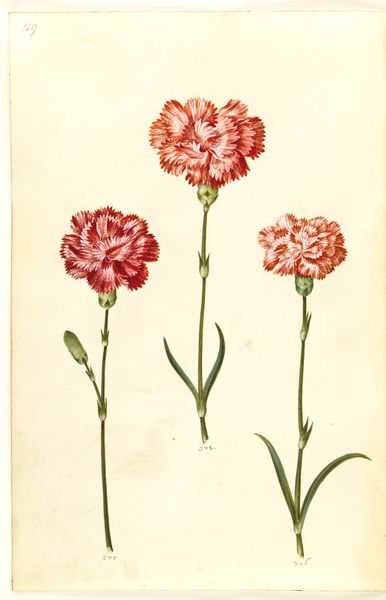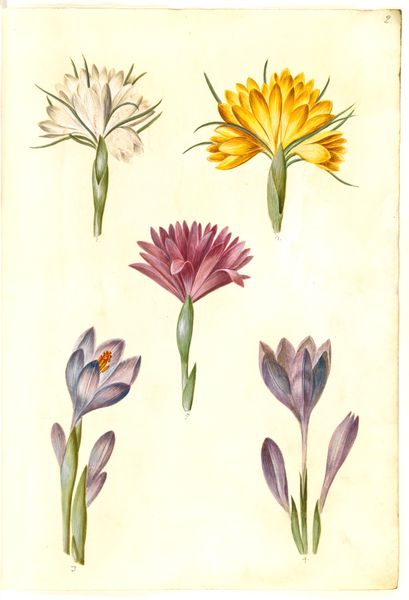
drawing, gouache
#
drawing
#
gouache
#
botanical art
Dimensions: 375 mm (height) x 265 mm (width) x 85 mm (depth) (monteringsmaal), 358 mm (height) x 250 mm (width) (bladmaal)
Hans Simon Holtzbecker created this watercolor and gouache on paper of the Anemone pavonina, or peacock anemone, in seventeenth-century Germany. At the time, botanical illustration served not just a scientific purpose, but a social one. Flowers, especially exotic varieties, were collected and meticulously documented as symbols of wealth and status. Holtzbecker’s detailed depiction of the anemone, with its vibrant colors and delicate form, reflects the growing interest in natural history and the culture of display that characterized the period. The artist's employment at Gottorf Castle also highlights the role of aristocratic patronage in fostering artistic and scientific endeavors. By studying archival records, letters, and inventories from the period, we can better understand the social and cultural values that shaped the creation and reception of works like this. The meaning of art is always contingent on its historical context.
Comments
No comments
Be the first to comment and join the conversation on the ultimate creative platform.
